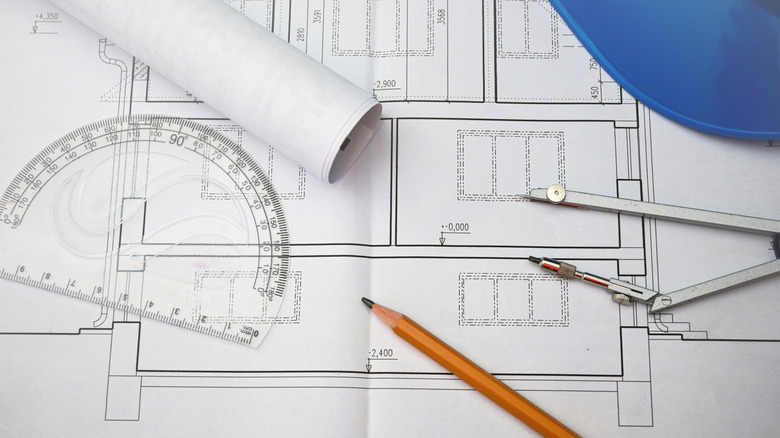Crucial Things To Know Before Adding An Accessory Dwelling Unit To Your Backyard
The names vary — granny flat, casita, carriage house, or in-law apartment — but the much less romantic, yet official, name for a tiny house in the backyard is accessory dwelling unit (ADU). A growing trend, ADUs provide an independent living space, usually for a senior or relative, but also sometimes a rented housing unit.
The most important thing to know before adding an accessory dwelling unit to your backyard is simple — is it permitted? About a third of U.S. states have given the go-ahead for homeowners to build an ADU on their land. Other states haven't decided yet but allow various counties and cities to permit ACUs as needed. Before making plans for a small dwelling for one or two people in your backyard, check your state and local ordinances. If the answer is you can build one, the next question is, should you add a granny flat? Will adding an ADU benefit your family, and also, can it add value to your home?
How close do you want your ADU?
Two more crucial things can drive your decision to build an ADU. One consideration is whether having a relative or stranger just outside the door is a good thing. Having a beloved relative close by may be a practical solution to a host of problems, and sometimes it may be the only solution to ensure the safety and comfort of a family member. But ADUs are sometimes built to generate rental income, so think about how close you want a stranger living to your home and maybe place your unit further away from your house. Also, check local ordinances to see if you are permitted to rent an ADU to a person who's not related. AARP, the organization that advocates for people 50 years old and older, has a definitive guide regarding ADUs.
If you can build, the next consideration is cost. We admire DIYers who repair various aspects of their houses, garages, or outbuildings, but this is a case where you want a professional builder. Everything must be up to code and pass all inspections, not to mention the vital connections to water, sewer, possibly gas, and electricity. Plus, since you are investing in a new, although small building, you'll want to protect your investment, so work with the best builder you can afford.
What about your ADU's style and placement?
We've referenced an ADU as a small structure behind the primary house, but know that ADUs also can be part of the main house as a separate suite with its own entrance. An ADU can be configured as part of a lower level or a garage just as easily as a stand-alone unit. Once you've acquired the permission to build and you've established your budget, the next thing to decide is the design. Note that there's an aesthetic that differentiates a granny pod from a mother-in-law suite. Granny pods are set up to accommodate a senior resident with ramps, railings, and more, while a mother-in-law suite is more like a guest house with amenities, but no additional accommodations.
Placement is another essential element to consider. Do you want the entrances to face each other, creating a common area? This area could be centered by a garden, fountain, pool, or firepit. Or do you prefer the entrance to the ADU facing away from the main house for privacy? Also, does the resident of the ADU need a driveway and parking area, and if so, where will that be placed?
Additional decisions to make include the overall size of this extra living space. (Most ADUs are between 600 and 1,200 square feet.) Also consider the building's style, and how it blends in with the neighborhood.


